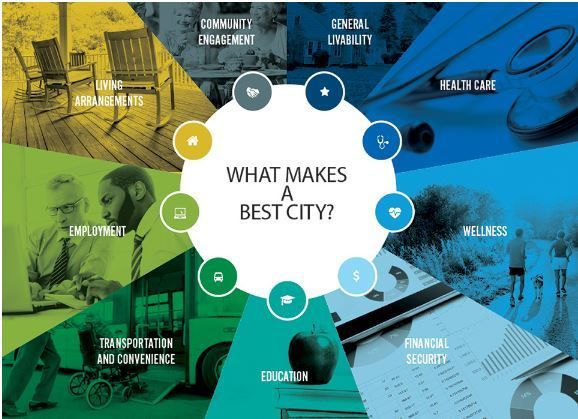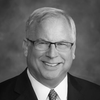A defining feature of the 21st century is how much longer we live and how many opportunities these extra years can offer to individuals, families, communities, and entire countries. Today an American who is 65 years old can expect to live another 15 to 20 years on average, well past the traditionally defined age of retirement. Our challenge now, as philanthropies, government officials, planners, business leaders, and citizens, is to find ways to help more people make the most of this wonderful gift of time.
One smart way to do this is by creating environments that take full advantage of this longevity -- capturing the momentum experienced by people who have lived for decades and still have decades ahead of them, to create benefits for people of all ages.
What a difference a place makes
How we design our cities, towns, and communities, and how we connect with one another can have a remarkable impact. The growing awareness of environment as a social determinant of health and wellbeing is the driving force behind the global age-friendly communities movement. It is also the rationale behind the newly-released third edition of the "Best Cities for Successful Aging” report and index from the Milken Institute.
The majority of older Americans live in metropolitan areas. To evaluate how these urban environments are fostering the best quality of life for older adults, the Milken Institute analyzed 83 indicators in nine categories including general livability, health care, wellness, financial security, living arrangements, employment, education, transportation and convenience, and community engagement, to formulate an index of 381 American metropolitan areas.
“The future of aging will be different, and it’s time to challenge conventional wisdom,” Paul Irving, chairman of the Institute’s Center for the Future of Aging, says. “Older adults expect their communities to support their changing needs, recognize their abilities, and enable their contributions to the greater good.”

In a recent conversation with Paul Irving, we discussed what the most successful communities have in common, how more places can tap the power of older adults, the Institute’s Mayor’s Pledge, and why the Best Cities Index is important.
Paul Irving: Our work is not about the best places to retire, it’s about the best place to live and age.
We recognize the AARP data that suggests that approximately 90% of older adults want, and intend, to age in place and in community. We see even stronger inclinations in that regard from the coming generations – Gen X and the Millennials.
We also believe that the same things we want and need in cities for older adults – the opportunities for lifelong learning, walkable and safe streets, good nutrition options, and a strong health system – are good for people of all ages. A door that’s designed for a 25 year old may not be able to fit a wheelchair, but a door designed for a wheelchair can almost always fit a 25 year old.
John Feather: This is your third edition, and one of the things that is quite different now from when you first began this effort is the economy. Why has that been important?
Paul Irving: Part of living and aging is the ongoing opportunity for work. We believe, and the data suggest, that more and more people want to continue to work past traditional retirement age. They may need to work for financial security, and they may also seek the stimulation, new challenges, opportunities to enjoy robust relationship networks that working offers.
With an improving economy, those opportunities changed for the positive for many since the first version of our survey came out in 2011.
John Feather: Is there something that many of the most successful communities have in common?
Paul Irving: There are several things, but one interesting one is the existence of a prominent academic institution. In university and college towns, we find stronger economies tied to the innovation and entrepreneurial activity that happens around universities. We often find highly rated health systems, innovative transit systems, and strong cultural amenities, such as music, theater, and film. These towns often offer athletics and opportunities for physical activity, and they emphasize safety. The presence of a major university becomes a helpful indicator that a place is a reasonably good place to grow old. It’s one of the reasons we should embrace our universities.
John Feather: You launched your Mayor’s Pledge in 2015, to challenge mayors to make their cities better for older adults. About 200 mayors have now signed it. Why mayors?
Paul Irving: Mayors are often nonpartisan, or less partisan, than their counterparts in Washington, and they’re directly in touch with their communities. They’re more able to understand the distinct characteristics and needs of their communities. Mayors have also been dealing for a long time with increasing diversity that has affected policies and practices and created new opportunities, and age is now very much part of that diversity matrix.
John Feather: If I’m the mayor of a town or city, what should I be doing to make my community better, under these criteria?
Paul Irving: We often think of investment in infrastructure, like strong transit systems and good, inexpensive housing, as being important, and they are. But there are also opportunities to do small, innovative, and often less expensive things that can dramatically improve lives. [See “Programs with Purpose”]
An example could be the creation of an intergenerational reading program at a library, which can benefit not only a child but also an older adult volunteer, by improving that person’s health and wellbeing and sense of purpose.
Here in Los Angeles, our mayor and Board of Supervisors adopted a program called Purposeful Aging Los Angeles, with a mandate to the head of every agency saying, in effect, “You will consider the impact on older adults in everything you do.”
So whether it’s recreation and parks, or buildings, or safety, or street maintenance, or the airport commission, if you’re an official in L.A., you now must think about how your actions are going to affect and, we hope, enhance the lives of older adults.
It’s an incredibly powerful and yet simple idea, and I think it is a model that can exist in every city, every county, large and small, across the country, as well as in rural areas.
John Feather: You often speak about the concept of “generativity” – the desire of older people to pass on their knowledge, to make the world better for the next generation. How is this related to purposeful aging and the Best Cities Index?
Paul Irving: There are no ideal communities and never will be, but every community can improve. I see this notion of looking at older people in new ways -- as a valuable human resource that can enrich communities and workplaces and families -- and the need to make investments and take an interest in improving our physical circumstances to enable that, as critical to our future.
